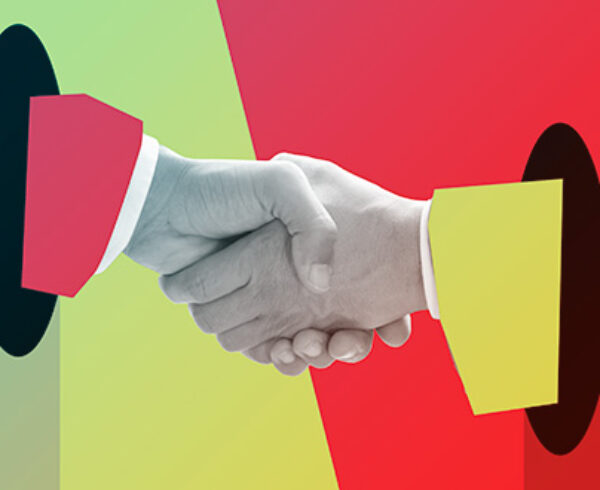You probably don’t think much about your tech stack or developing a healthy tech stack. After all, if your tech stack is efficient, you barely recognize that it’s there. It’s only when a tech stack becomes inefficient that it becomes noticeable.
A tech stack is the combination of all the different tech software, apps, etc., that you use on a regular basis to get things done. Whether you’re a travel manager, executive or anyone else within an organization, you have a tech stack that contributes to how efficiently you do your job.
When it comes to business travel, you likely further have a specific suite of software and tools, or a specific travel management tech stack, that allows each business trip to occur. A healthy tech stack for business travel allows you to save time and money, whereas an unhealthy tech stack is difficult to use, frustrating, and a drain on time, money and resources.
Here’s how to know whether or not your existing business travel tech stack is truly healthy.

1. A healthy tech stack limits redundancies.
No one likes redundancies within their workflow. Requiring the use of multiple tools to perform similar tasks, inputting the same information in multiple places, and clicking a long list of the same boxes over and over again — it all makes for frustration and lost time. No matter if these redundancies only impact your core team of travelers or if they impact everyone along the chain of command, remove them for a truly healthy tech stack.
2. A healthy tech stack is easy to use.
A healthy tech stack incorporates tools, software and apps that are easy for everyone to use. Whether they’re business travelers or travel managers, executives who need a glimpse at the travel budget, or a consultant brought in to help you streamline duty of care — everyone needs to be able to easily use every single piece of tech that’s applicable to their role.
Ask these individuals for their feedback and see where certain tools or software may be impacting the overall health of your tech stack.

3. A healthy tech stack covers all your bases.
If team members currently have to go outside of the designated tech stack in order to get their job done (e.g., relying on external or personal tools, systems or processes), then you do not have a healthy tech stack.
While, yes, you don’t want so many inclusions in your tech stack that you create redundancies or waste your teams’ time with excess steps or tasks, you also want to be sure that your teams have everything they need within the tech stack in order to complete their jobs efficiently.
4. A healthy tech stack is a safe tech stack.
All of the tech included within your tech stack should be safe, private and secure. Don’t incorporate less-than-secure tech just because you think it brings other benefits to your teams. If there’s any question whatsoever that a software, app or other tool will potentially expose your team to data breaches or a breach of privacy, simply do not include it.
5. A healthy tech stack is automated where possible.
Thanks to the growing number of automated travel booking options and similar solutions, so much of the travel booking process can be automated. This means less work for your business travelers and less work for travel managers — and overall money saved as a result.
6. A healthy tech stack is scalable.
If you’re an SME, you need a tech stack that can grow with you. You don’t want to scale up and then suddenly realize that your previous tech stack just doesn’t work anymore. As you optimize your tech stack, think about how scalable it is or isn’t, and then make needed adjustments accordingly. Keep an eye on the needs of the future rather than thinking about just the here and now.
What travel tools do you need in a healthy tech stack?
There are a few tools that you will likely need in a business travel-specific tech stack. Do you currently include these tools within your team’s tech stack?
Traveler Compliance Tools
Travel compliance is often a pain point for many a travel manager. However, it doesn’t have to be. With the right tools, you can ensure travelers remain compliant or that they don’t even have the chance to become non-compliant. Software that denies non-compliant trips, expenses and more can add a layer of efficiency and cost savings to your tech stack. Potential tools to consider include those offered by Concur, Sabre and TripKicks.
Travel Disruption Support Tools
No one likes a trip delay, and for business travelers, those delays can mean a serious loss of money, time and productivity. Every business travel tech stack should include tools that assist travelers quickly and efficiently whenever a disruption occurs.
Traveler Tracking Tools
Knowing where your travelers are and staying in easy contact with them makes duty of care easier. Consider adding a traveler tracking and/or communication tool to your business travel tech stack.
Do you have a healthy tech stack?
If you feel like your current business travel tech stack does not fit the above criteria. It might be time to take a thorough analysis of your tech stack’s current state and how it could stand to improve.
Take inventory of every software, app, etc., that sits within your tech stack. It can be helpful to involve all of your stakeholders in this inventory process. Then, analyze what tools are needed and which are just making your tech stack less than ideal. Streamline and optimize for the healthiest tech stack possible.
Need help with this process?
If you want to create a healthy tech stack for your business travelers that saves money in your business travel budget and that makes business travelers’ lives easier, let’s talk. JTB Business Travel offers a range of products and services designed to optimize business travel from the time of budget planning to trip planning, to duty of care and every other step along the way.














Leave a Comment